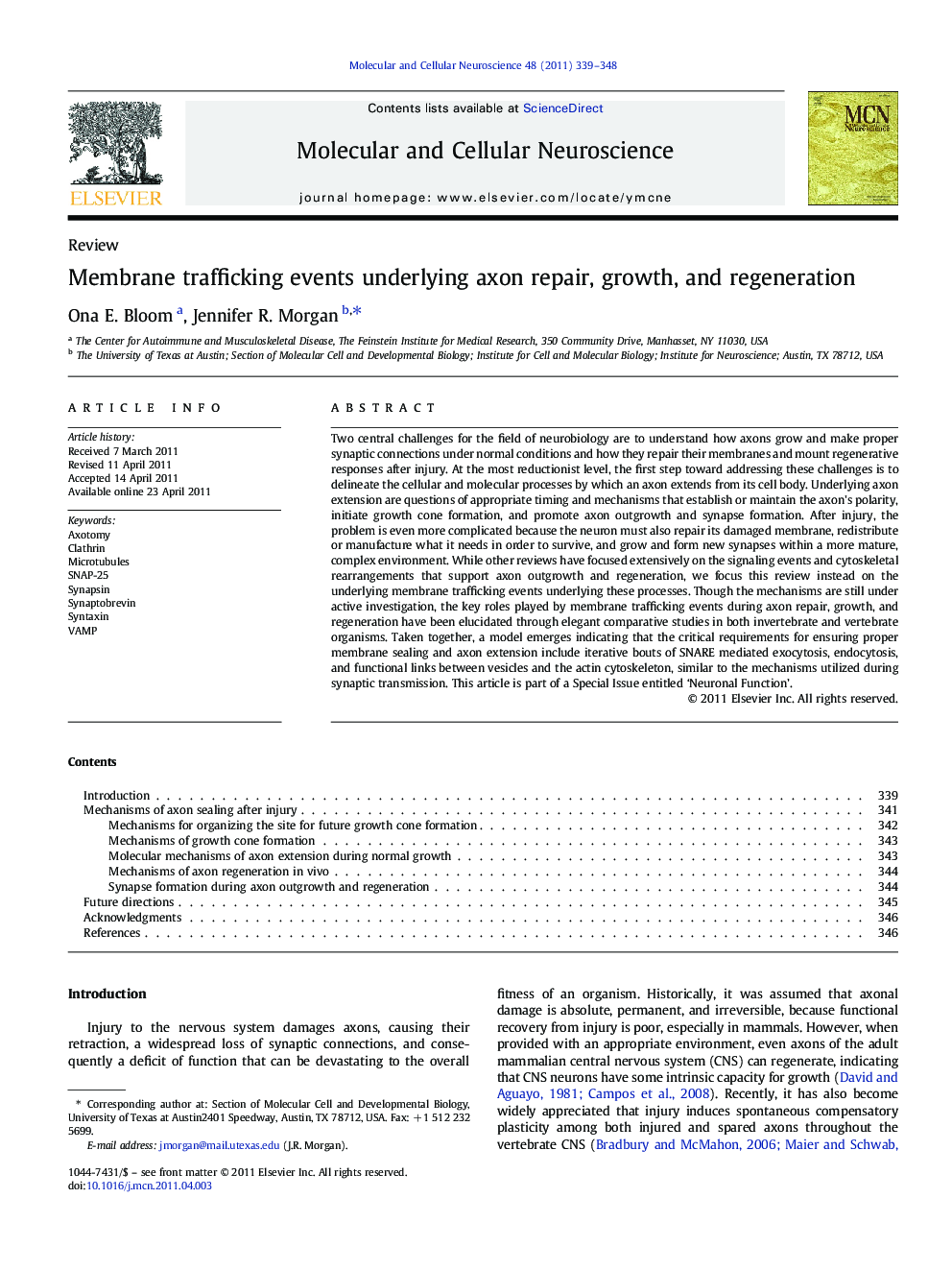| Article ID | Journal | Published Year | Pages | File Type |
|---|---|---|---|---|
| 2198690 | Molecular and Cellular Neuroscience | 2011 | 10 Pages |
Two central challenges for the field of neurobiology are to understand how axons grow and make proper synaptic connections under normal conditions and how they repair their membranes and mount regenerative responses after injury. At the most reductionist level, the first step toward addressing these challenges is to delineate the cellular and molecular processes by which an axon extends from its cell body. Underlying axon extension are questions of appropriate timing and mechanisms that establish or maintain the axon's polarity, initiate growth cone formation, and promote axon outgrowth and synapse formation. After injury, the problem is even more complicated because the neuron must also repair its damaged membrane, redistribute or manufacture what it needs in order to survive, and grow and form new synapses within a more mature, complex environment. While other reviews have focused extensively on the signaling events and cytoskeletal rearrangements that support axon outgrowth and regeneration, we focus this review instead on the underlying membrane trafficking events underlying these processes. Though the mechanisms are still under active investigation, the key roles played by membrane trafficking events during axon repair, growth, and regeneration have been elucidated through elegant comparative studies in both invertebrate and vertebrate organisms. Taken together, a model emerges indicating that the critical requirements for ensuring proper membrane sealing and axon extension include iterative bouts of SNARE mediated exocytosis, endocytosis, and functional links between vesicles and the actin cytoskeleton, similar to the mechanisms utilized during synaptic transmission. This article is part of a Special Issue entitled ‘Neuronal Function’.
